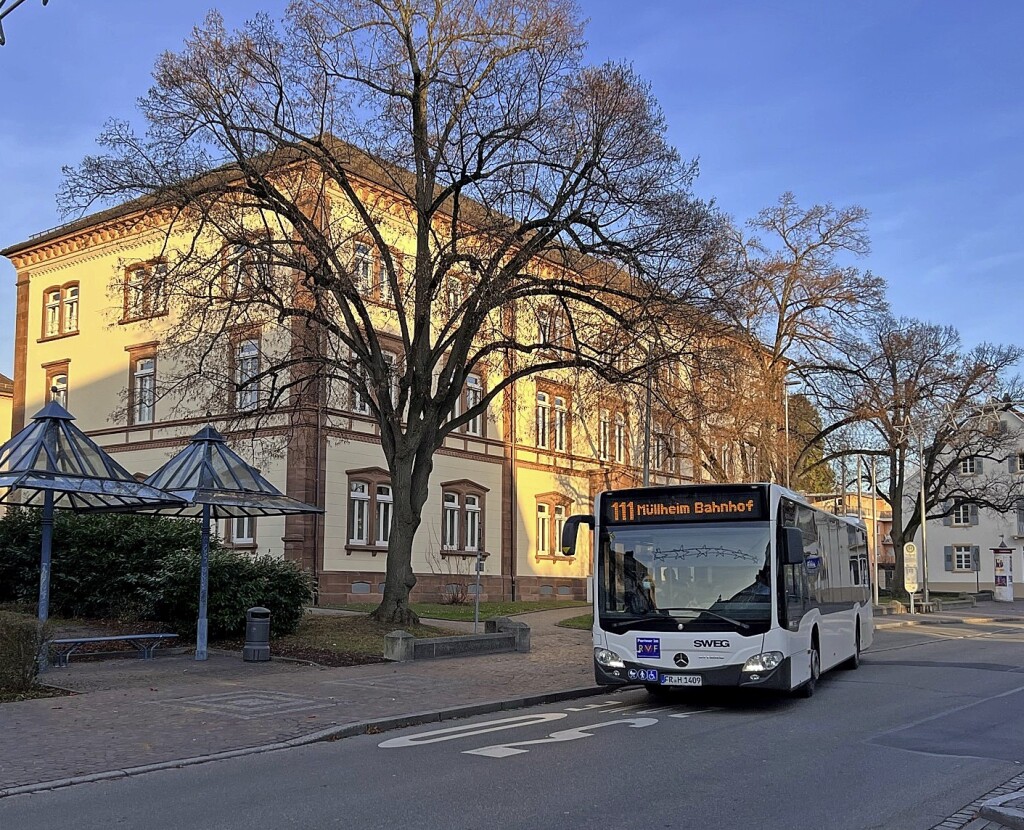The new local transport plan promises many improvements in the bus service in the region. However, the passenger advisory board says that the situation in Mllheim’s city center will even get worse.
The introduction of the new local transport plan (NVP) of the Freiburg Region Local Transport Association is scheduled to start in 2024. The aim is a better public transport connection to the towns and districts in the districts of Breisgau-Hochschwarzwald and Emmendingen as well as the city of Freiburg. A complex task that has already led to all sorts of discussions. The plan is now in place, even if it has not yet been translated into concrete timetables.
The Passenger Advisory Board South in the regional transport association Freiburg sees the NVP as a step in the right direction – as far as the connection between the Oren in the Mllheim area by bus is concerned. The connection to the Mllheim districts, for example, will be improved, says Bruno Bartsch from the passenger advisory board. But: The inner-city bus supply remains insufficient, sometimes even worsening. For the passenger advisory board it is clear: In order to remedy the situation, it is not the district that is required, but the city of Mllheim itself.
The matter is complex, which also means that the city administration on the one hand and the passenger advisory board and the Markgrflerland Environmental Protection Working Group on the other hand evaluate it differently – especially with regard to Mllheim’s inner city.
On paper, it doesn’t look bad at first: With the new NVP, 74 pairs of journeys will connect Mllheim’s train station with a stop in the city center on weekdays (not including school buses). If one considers the night with fewer journeys, then arithmetically every 15 minutes a bus departs from the train station to the city center or arrives at the train station from there.
However: In the future, 45 of these pairs of journeys – namely the lines that connect Mllheim in the direction of Staufen, Heitersheim and Schliengen – will be routed via the southern ring road. ZRF Managing Director Thomas Wisser justified this in the local council with the fact that a tour directly through the city center (via Werderstrasse and Hauptstrasse) would make punctuality at the station very difficult due to the traffic situation.
The lines via the Sedtangente head for stops at the Bürgerhaus, Verkehrsamt and some during school hours also at the school center, but not in the area further west of the city center, such as at the district court, the gymnasium or in the Platanenallee. These should only be supplied via the line that runs from the train station to Badenweiler. Only 29 pairs of journeys pass there – today there are 56.
While the Mllheim town hall has so far assumed that the bus coverage of the city center is sufficient overall with the new NVP, the passenger advisory board sees it differently. For sometimes highly dense quarters, for example in areas of the northern core of the city, walking distances to the bus stops are too long – and this makes public transport less attractive, says Bartsch.
The advisory board’s demand: the city must create additional offers in the inner-city area, as is also the case in other communities such as Bad Krozingen, Breisach, Emmendingen and berlingen. Bartsch reminds that there was a city bus in Mllheim until 2004, which was discontinued because the city budget was tight, the operating cost subsidy amounted to 57,000 euros. Finding a replacement came to nothing, also because reference was made to the new NVP.
According to Bartsch, it was foreseeable that this would not be enough for Mllheim to create an attractive and modern PNV offer. The advisory board writes in a statement that it hopes that the city of Mllheim will give more priority to its task of providing services of general interest and offer its citizens a nationwide public transport service “that is appropriate to that of a large district town”.


